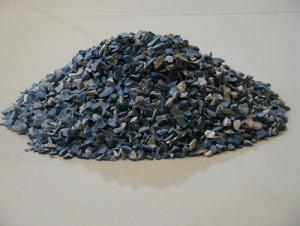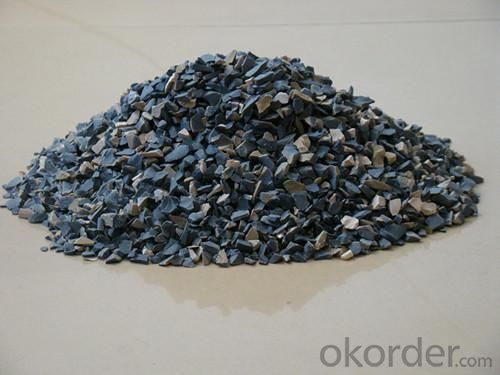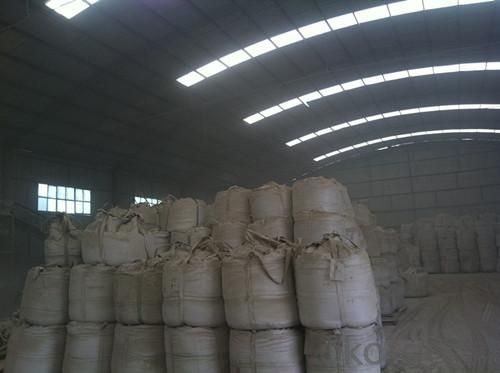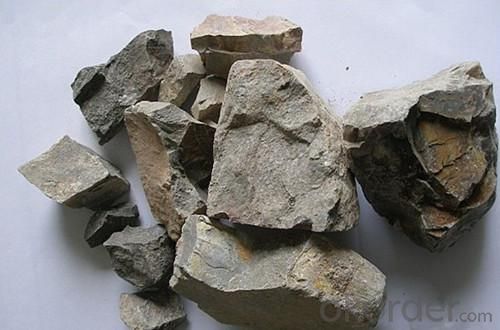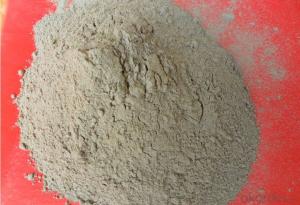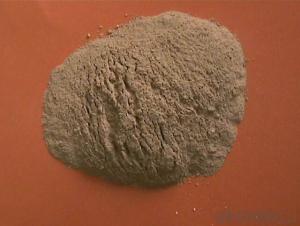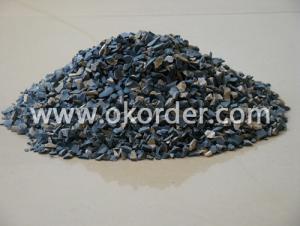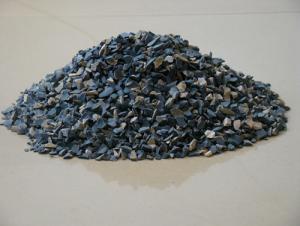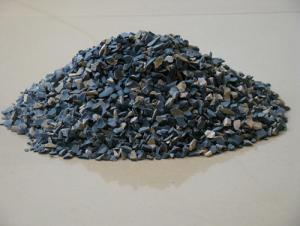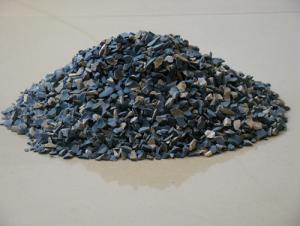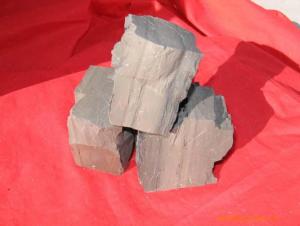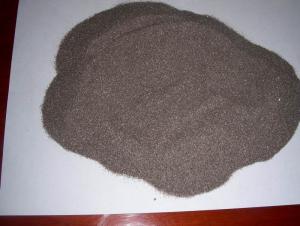Calcined Bauxite Rotary Kiln Al2O3 80% - Raw Materials for Refractory
- Loading Port:
- China Main Port
- Payment Terms:
- TT or LC
- Min Order Qty:
- 50 Metric Ton/Metric Tons m.t.
- Supply Capability:
- 20000 Metric Ton/Metric Tons per Month m.t./month
OKorder Service Pledge
OKorder Financial Service
You Might Also Like
Quick Details of Calcined Bauxite Rotary Kiln Al2O3 80% :
Place of Origin:China mainland
Material:Alumina block
Al2O3 Content(%):80%min
Refractoriness(Degree):1770℃<Refractoriness<2000℃
Shape:Block
Specifications of Calcined Bauxite Rotary Kiln Al2O3 80% :
|
Al2O3 |
80%min | ||
|
Fe2O3 |
3.0%max | ||
|
TiO2 |
4.0%max | ||
|
CaO+MgO |
0.5%max |
|
|
|
K2O+Na2O |
0.3%max |
|
|
|
B.D. |
2.80g/ccm min. | ||
Size:All sizes according to customers’requirements
Standard:Industry standards
Packaging & Delivery of Calcined Bauxite Rotary Kiln Al2O3 80% :
Packaging details:1mt big bag or according to customers’ requirements
Delivery:7-15 work days after the order is confirmed
Competitive Advantages:
High Heat-resistance.
High Purity & Good Quality.
Timely delivery & service
Good company reputation
Competitive Price & Reputable Supplier.
Usage/Applications:
1.Aluminium industry. Used in national defense, aerospace, automotive, electronics, chemical industry, daily necessities, etc.
2. Precision casting. Alumina clinker made after the mould precision casting processed into fine powder. Used in military industry, aerospace, communications, instrumentation, machinery and medical equipment department.
3.Refractory products. High bauxite clinker refractoriness is as high as 1780, chemical stability strong, and good physical properties.
4.Aluminum silicate refractory fiber. With light weight, high temperature resistance, good thermal stability, low thermal conductivity, heat capacity is small and the advantages of resistance to mechanical shock. Used in iron and steel, nonferrous metallurgy, electronics, petroleum, chemical, aerospace, atomic energy, defense and other industries.
5. In magnesia and bauxite clinker as raw materials, add the appropriate binder, used for pouring ladle whole ladle lining has particularly good effects.
6.Manufacture alumina cement, abrasive materials, ceramic industry and chemical industry can be aluminum of various compounds.
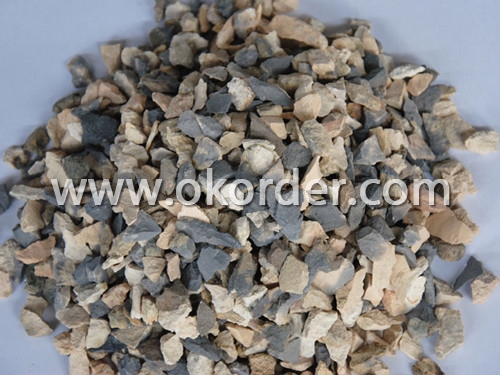

- Q: What are the materials of white firebricks?
- The commonly-used firebricks include alumina bricks, corundum bricks, chamotte bricks, high alumina bricks, diatomite bricks, zircon bricks, lightweight corundum bricks, zirconia bubble bricks and so on ~~~
- Q: What are the fire endurance requirements of class A fire resistant door ?
- The fire endurance of class A fire resistance door is 1.5H, but also depends on the product quality. The filling material of class A, B, C fire doors is the same, new fireproofing material-- perlite. The difference is their thickness. The general structure is: surface panel, fireproof?board framework (filled with perlite) fireproof?board panel. !
- Q: what is the grading standards of external wall thermal insulation materials?
- external wall thermal insulation materials are divided according to Fire rating: 1, the combustion performance of insulation materials rates A. inorganic fiber spray coating, glass wool, foam glass, foamed ceramic , rock wool, foam cement, obturator perlite 2, the combustion performance of insulation materials rates B1: Extruded polystyrene board (XPS)after special treatment / polyurethane (PU) after special treatment, phenolic aldehyde, gelatine powder polyphenyl granule.3, combustion performance of insulation material rates B2. Molded polystyrene board (EPS), extruded polystyrene board (XPS), polyurethane (PU), polyethylene (PE), etc.
- Q: What kinds of fireproof and fire retardant materials are there?
- fireproof materials are mainly non-combustible A material and flame retardant B1materials. Class A non-combustible material: Granite, marble, terrazzo, cement products, concrete products, plasterboard, lime products, clay, glass, tiles, mosaics, steel, aluminum, copper alloy; B1 grade flame retardant materials: Ceiling materials gypsum board, gypsum fiber boards, cement particle board, mineral wool acoustic panels, glass wool decorative acoustic board, perlite decorative acoustic board, flame retardant plywood, medium density fiberboard flame, rock wool decorative panels, retardant wood, aluminum composites, flame retardant phenolic plywood, aluminum foil, glass fiber reinforced plastic composite materials; wall materials gypsum board, gypsum fiber boards, cement particle board, mineral wool board, glass wool board, perlite board, flame retardant plywood, retardant MDF, fireproof plastic decorative plates, flame-sided particleboard, colorful paint, flame retardant wallpaper, wall covering flame retardant, flame imitation granite decorative plates, magnesium oxychloride cement prefabricated wall panels, flame retardant glass fiber reinforced plastic plate, PVC plastic sheeting, high-strength lightweight composite panels, fire-retardant molded wood composite board, color retardant plywood, fiberglass and other flame retardant.
- Q: How to divide the materials according to the National Fireproofing Material Standard?
- Each country has its own fire safety standards, I do not know which country's standard do you want to know, and each country of fireproof material to the division level is not the same. GB GB 8624, the German standard DIN 4102-1, the British standard BS 476, French standard NF P92 -501 and so on. GB 8624 is Chinese building materials and grade of combustion performance. The information coming form fire resources network (FireTC.
- Q: How to solve the shell, the crack problem of refractory material in the process of forming.
- Pressure mode and number of pressure control "spallation". 2, multiple pressure, pressure degree and discharge way: 1, reduce friction, choose appropriate, than big pressure disposable pressure produced by the plastic deformation, allocate reasonable grading, internal and external friction, reduce billet particles and high die wall bright. 4.--- solve the light one firstly. --moisture content being too high easily cause spallation - the compressibility of water is small and have certain elasticity, appropriately to extend the pressuring time is beneficial. The material can produce large plastic deformation under the effect of continuous load. The right amount of lubricant. - body under the condition of less pressure but long effect time molding. Mould structure is reasonable and improve billet natural stacking density. 5.3, measures to improve the unburned brick molding quality. Many times continuously pressure relief is better than one-off sudden unloading, and controlling the appropriate moisture content;- - is beneficial to air overflow.
- Q: The effect of a high content of water in liquid resin exerted on refractory material?
- For one thing, Substandard whiteness, transportation, low quality and the storage of refractory material may account for this. For another, a high content of moisture reduced the performance of refractory material. A high content of moisture is equal to buy water with same money in terms of trade settlement. Based on this, we can’t consider the super-standard water content from a single aspect, because the water content in refractory material is definitely super-standard, and another problem is particle size. Many people hold the idea that excessive amount of water content may revive its original performance, but it tends to have influenced the quality of refractory material.
- Q: Please answer the questions about the packing and transportation requirements of refractory materials.. Requirements for packing of refractory bricks
- Exports should be fumigated outside of South East asia. Pallet packing is the most common, convenient and inexpensive.
- Q: Do you know where I can buy refractories?
- A Address of Guangzhou Lingnan Refractories Co., Ltd. : No.1069 Guanghua 1st Road B Address of Guangzhou Aolian Refractories Co., Ltd. :
- Q: How to divide the fire resistant level of construction thermal insulation materials?
- How to divide the fire resistant level of construction thermal insulation materials: Combining three versions of GB8624 (1997,2006,2011) external wall thermal insulation fire?rating can be basically divided into: A1, A2, B1, B2, B3 and other levels. There are many technical indexes for specific division, very professional and technical, so it is hard to say clear now. For details, please contact Qingdao Shanfang Instrument Company who is specialized in fire?rating tester for external wall thermal insulation materials.
1. Manufacturer Overview
| Location | Tianjin,China |
| Year Established | 2006 |
| Annual Output Value | Below US$1 Million |
| Main Markets | Mid East;Western Europe;Japan;North America |
| Company Certifications | The Authentication certificate of Quality Management system |
2. Manufacturer Certificates
| a) Certification Name | |
| Range | |
| Reference | |
| Validity Period |
3. Manufacturer Capability
| a) Trade Capacity | |
| Nearest Port | Tianjin |
| Export Percentage | 61% - 70% |
| No.of Employees in Trade Department | 50 People |
| Language Spoken: | English;Chinese |
| b) Factory Information | |
| Factory Size: | Above 300,00 square meters |
| No. of Production Lines | Above 5 |
| Contract Manufacturing | Design Service Offered |
| Product Price Range | Average |
Send your message to us
Calcined Bauxite Rotary Kiln Al2O3 80% - Raw Materials for Refractory
- Loading Port:
- China Main Port
- Payment Terms:
- TT or LC
- Min Order Qty:
- 50 Metric Ton/Metric Tons m.t.
- Supply Capability:
- 20000 Metric Ton/Metric Tons per Month m.t./month
OKorder Service Pledge
OKorder Financial Service
Similar products
Hot products
Hot Searches
Related keywords
